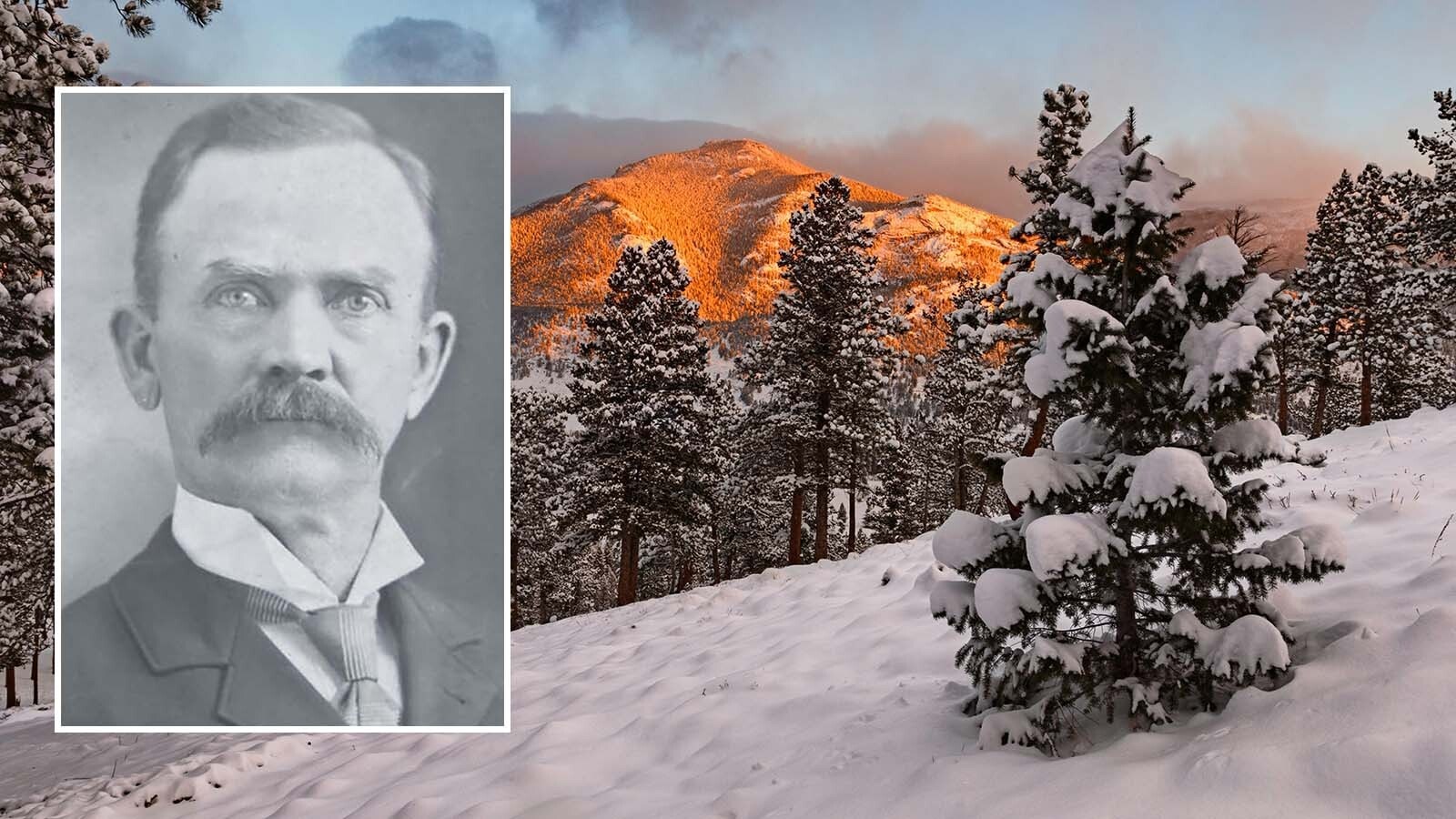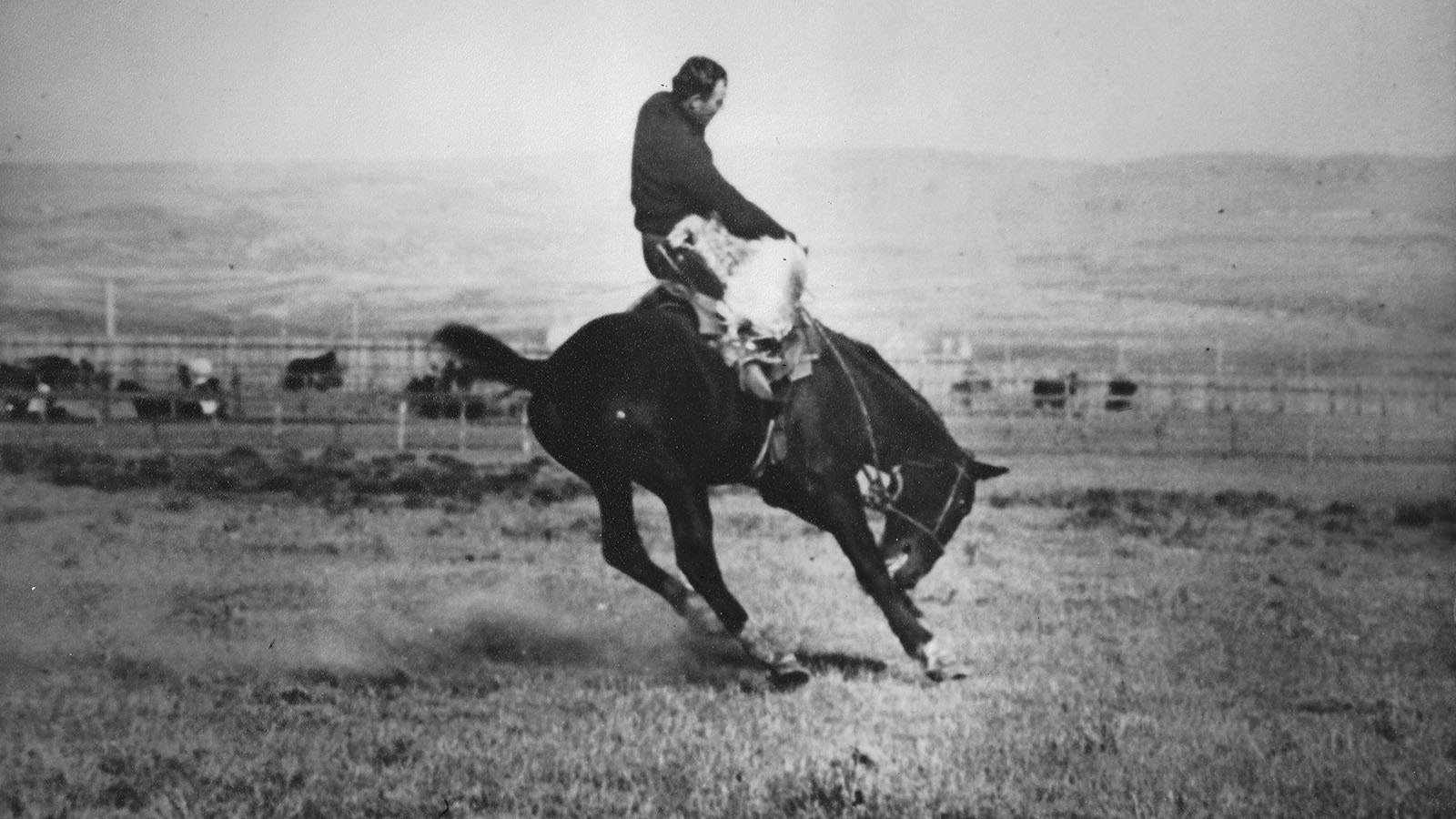When crossing the rolling prairie of South Dakota from the east, the traveler will see the Black Hills stretching across the western horizon. A massive singular peak stands apart just northeast of the Black Hills looming over the prairie as if placed there as a sentinel guarding the approaches to the Hills. This mountain is Bear Butte, sacred to the Cheyenne and Lakota.
Rising 1,200 feet over the surrounding prairie, Bear Butte is located four miles to the northeast of the Black Hills. Volcanic forces within the earth began creating Bear Butte 51 million years ago.
During that same epoch, the Black Hills were rising above the prairie. Molten rock pushing its way up through sedimentary rock never broke through the earth’s surface. The molten rock hardened in place leaving behind a granitic core forming the basis for Bear Butte.
The flora and fauna that live on Bear Butte’s slopes are typical of the northern plains. Ponderosa Pine and juniper trees as well as prairie grasses, flowers, and Yucca plants grow there.
Deer, buffalo, antelope, porcupine, hawks, and eagles make Bear Butte their home. Archaeological evidence of campfires bears testimony to humans having visited the Bear Butte area for at least 4,000 years.
The Cheyenne who have lived in the Northern Plains for hundreds of years, call Bear Butte, Noahvose, or Where the Cheyenne Are Taught.
Many, many years ago, the Cheyenne did not know how to live properly. A Cheyenne named Sweet Medicine killed another Cheyenne when he tried to take a buffalo kill from Sweet Medicine.
The Cheyenne banished Sweet Medicine from the village. In his wanderings, Sweet Medicine visited Noahvose. There he entered within Noahvose and met Maheo, a Great Spirit who lives within the mountain.
Maheo gave Sweet Medicine knowledge to pass on to the Cheyenne as to how to organize the tribe and live together with respect for one another.
Maheo gave Sweet Medicine four Sacred Arrows to entrust to the Cheyenne. The Cheyenne accepted Sweet Medicine’s message and ever since, the Cheyenne travel to Noahvose in groups and as individuals to pray, worship, and seek guidance. Noahvose is one of the Cheyennes’ most sacred sites.
The Lakota call the mountain Mato Paha meaning Bear Butte. When viewing Bear Butte at a distance from certain angles, it resembles a sleeping bear.
The Lakota have visited and lived in the area of Mato Paha for hundreds of years. It is a sacred place to them where they practice one of the seven virtues given to them by White Buffalo Calf Woman. This virtue, using a vision quest, is to seek wisdom from Wakan Tanka, the Lakota’s name for God.
After purifying himself in inipi or a rebirth ceremony, a Lakota will find a solitary sacred spot where he will remain four days and nights without food and water.
During that time, he may have visions from Wakan Tanka. He will then seek interpretation from a person who can tell him what he has seen. The Lakota hold Mato Paha as one of their most sacred places for their vision quests.
The Cheyenne, Lakota, and other tribes leave strips of brightly colored cloth, tobacco, rocks placed in trees, and other items as tokens of respect and worship.
Some historians believe the first white men to see Bear Butte may have been the Verendrye brothers, Francois and Joseph from Three Rivers, Canada, who were looking for a northwest passage to the Pacific Ocean in 1742.
The Verendryes wrote about the Mountain of the Horse People, which may have been Bear Butte. In later years, fur trappers and explorers traveled past Bear Butte on their way further west.
The Lakota were concerned about white men entering He Sapa, the Black Hills, and ran off or killed anyone they found there. Trappers and prospectors circulated rumors of gold in the Black Hills.
In 1857, Lieutenant Gouvernor Warren, a US Army topographic engineer, led the first government-sponsored scientific and topographic expedition to the Black Hills.
Accompanying Warren was a young geologist, Ferdinand Hayden, and a 17-man military escort. Hayden had earlier visited the area surrounding the Black Hills region and historians consider him the first white man to climb Bear Butte on March 9, 1855. Warren and his men left Fort Laramie traveling northeast.
At Inyan Kara Mountain to the west of the Black Hills in present-day Wyoming, they met a band of Lakotas hunting buffalo. They warned Warren not to enter He Sapa.
Warren complied with their wishes and did not enter the Black Hills; but his expedition did circle along its foothills. Warren recorded their route and kept detailed topographic field notes for mapping, and Hayden collected geologic specimens finding traces of gold in creeks near Bear Butte.
That same year, Lakota tribes gathered and met at the base of Bear Butte. There they decided no white men should be allowed to trespass in the Black Hills. Some of the more famous Lakota who visited Bear Butte were Red Cloud, Crazy Horse, and Sitting Bull.
In 1874, General Phil Sheridan directed Lieutenant Colonel George Armstrong Custer to lead a 1,000-man expedition from Fort Abraham Lincoln near present-day Bismarck, North Dakota, through the Black Hills in search of sites for future forts and to confirm the reports of gold.
The Lakota who possessed the Black Hills were not consulted. Custer’s prospectors did find gold.
As the expedition emerged from the Black Hills, Custer rested his men six miles south of Bear Butte on Saturday, August 15, before marching back northeast to Fort Abraham Lincoln.
Custer did not climb Bear Butte, but some of his officers did and Custer’s photographer, William Illingworth, took a long-distance photograph of Bear Butte.
The news that Custer’s expedition discovered gold started a rush for the Black Hills, which the federal government had declared would always remain with the Lakota in the 1868 peace treaty at Fort Laramie.
The military attempted to turn back the illegal rush, but it was too little too late. The government tried to buy the Black Hills from the Lakota, but they refused to sell.
This led to the government taking the Black Hills from the tribes and the deaths of Custer and his immediate 7th Cavalry command at the battle of the Little Big Horn.
As the government forced the tribes onto reservations, Bear Butte fell into private ownership. In 1961, the State of South Dakota bought Bear Butte, and it became part of South Dakota’s park system.
Lakota and Cheyenne continue to worship and seek visions at Bear Butte. The park is multiuse. There are hiking trails that anyone can use; but the state asks visitors to respect those who are on Bear Butte worshiping or seeking a vision.
Today, many tribes consider Bear Butte a sacred place. The Lakota and Cheyenne are concerned that some people may try to exploit the traditional use of the Bear Butte for money.
Every August, motorcycle riders converge on the nearby town of Sturgis and hold a weeklong motorcycle rally. Hundreds of thousands of people flood the area around Bear Butte during this event. The roar of motorcycles, rock music from outdoor concerts, and the babble from biker bars and campgrounds can certainly disrupt the solitude.
Even with all the hustle and bustle down below, Bear Butte remains a mystical place to experience.
Jim Jandreau, Bear Butte State Park Manager, says it best, “Management of Bear Butte as a state park preserves and respects the integrity of American Indian beliefs and uses of the sacred site while providing a place for visitors to experience the land and learn about indigenous cultures of the Plains”
Bill Markley can be reached at markley@pie.midco.net









